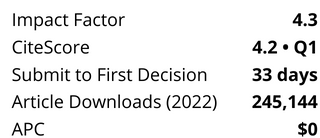Abstract
During a taste and odor episode (2-methylisoborneol) in a reservoir that supplies the Fortaleza Metropolitan Region, Brazil, two surveys were conducted to determine tap water usage behavior as well as the sensory sensitivity towards off-flavors of participants with the same level of education. Most volunteers did not consume tap water, mainly due to safety concerns (57%) and disagreeable organoleptics (21%). The majority of those who did use tap water (73%) did so because of economic reasons and the remainder because of the use of point-of-use water filtration systems, which rendered the water safer in their perception. The Human Development Index (HDI), as a measure of income, did not influence the rate of rejection. Volunteers from low and medium HDI neighborhoods were as likely to reject tap water as those from high HDI neighborhoods. Chlorine flavor and earthy flavor were the most perceived off-flavors. Water containing moderate amounts of off-flavor compounds (dilution 1:2 tap/bottled water) was considered ‘acceptable’ by volunteers while water containing low concentrations (dilution 1:5 tap/bottled water) was considered ‘good’.




%20cropped.png?versionId=5947)